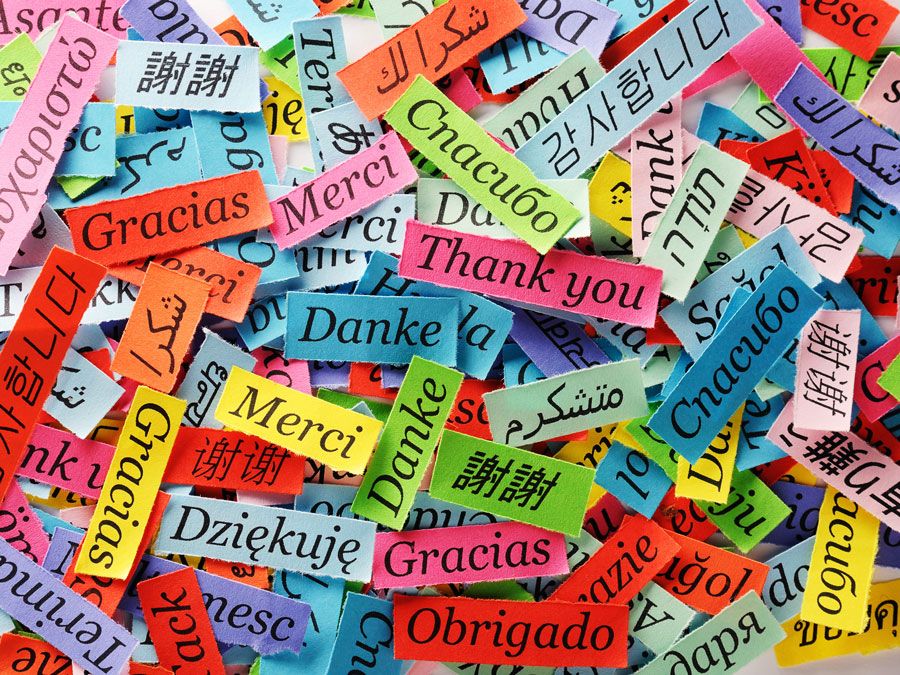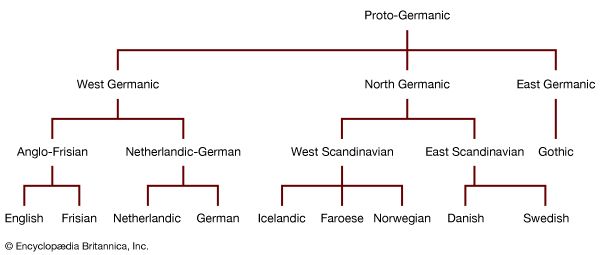Dutch language
- Also called:
- Netherlandic or Dutch Nederlands
- In Belgium called:
- Flemish or Flemish Vlaams
What is the Dutch language?
Where is Dutch spoken?
How did the Dutch language develop?
Dutch language, a West Germanic language that is the national language of the Netherlands and, with French and German, one of the three official languages of Belgium. Although speakers of English usually call the language of the Netherlands “Dutch” and the language of Belgium “Flemish,” they are actually the same language.
Dutch, which occurs in both standard and dialectal forms, is the language of most of the Netherlands, of northern Belgium, and of a relatively small part of France along the North Sea immediately to the west of Belgium. Dutch is also used as the language of administration in Suriname and on the islands of Curaçao, Sint Maarten, Aruba, Bonaire, Saba, and Sint Eustatius, which together once made up an entity called Netherlands Antilles. Afrikaans, which is a derivative of Dutch, is one of the official languages of South Africa.
In the Middle Ages the language was called Dietsc, or Duutsc, historically equivalent to German Deutsch and meaning simply “language of the people,” as contrasted with Latin, which was the language of religion and learning. The form Duutsc was borrowed into English and gives modern “Dutch.” The official name of the language is Nederlands, or Netherlandic. In the Netherlands it is also called Hollands (Hollandish), reflecting the fact that the standard language is based largely on the dialect of the old province of Holland (now North Holland and South Holland).

The spoken language exists in a great many varieties. Standard Dutch (Standaardnederlands or Algemeen Nederlands) is used for public and official purposes, including instruction in schools and universities. A wide variety of local dialects are used in informal situations, such as among family, friends, and others from the same village (these exist in far more variety than does the English of North America). Standard Dutch is characterized grammatically by the loss of case endings in the noun.
In Belgium efforts were made to give Dutch equal status with French, which had assumed cultural predominance during the period of French rule (1795–1814). In 1938 Dutch was made the sole official language of the northern part of Belgium.
The use of Standard Dutch together with the local dialect is much more widespread among the people of the Netherlands than it is in Belgium. The dialects of the area bounded roughly by Amsterdam, The Hague, and Rotterdam are closer to Standard Dutch than are those of the other dialect areas.
Together with English, Frisian, German, and Luxembourgish, Dutch is a West Germanic language. It derives from Low Franconian, the speech of the Western Franks, which was restructured through contact with speakers of North Sea Germanic along the coast (Flanders, Holland) about 700 ce. The earliest documents in the Dutch language date from approximately the end of the 12th century, although a few glosses, names, and occasional words appeared somewhat earlier.
















